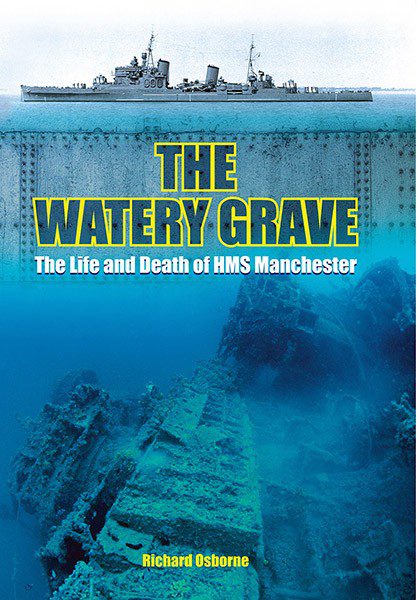Controversial sinking

WRECK-DIVES ARE OFTEN inspired by reading about the history of a wreck and the story of how it sank. However, the writing of this book about HMS Manchester was inspired by wreck-divers.
In particular, it was inspired by Simon Bennett’s 2002 expedition to dive the wreck.
I was fortunate enough to be part of that expedition, and we were accompanied by two of the veterans who had survived the sinking.
The resulting Crispin Sadler documentary Running the Gauntlet, along with the media interest that followed, prompted the author to undertake the research.
The book also benefits from some great historic photos, and includes some fabulous contemporary underwater shots and astute observations by Chris Simons, who dived the wreck in 2009.
The Royal Navy Town-class cruiser Manchester saw active service in the 1940 Norwegian campaign and was then sent to the Mediterranean to take part in the highly dangerous convoys to relieve the besieged island of Malta.
She had already been torpedoed and saved from a “watery grave” once by her captain. She was torpedoed again after three days’ bombardment while escorting a large convoy known as Operation Pedestal in 1942.
This time Captain Drew considered the ship too badly damaged to be saved and gave orders for it to be scuttled, instructing the crew to save themselves by swimming ashore. He was subsequently court-martialled, though many of the surviving crew felt this to have been a grave injustice.
The book delves in forensic detail into the background of the ship, the events that led to Captain Drew’s decision to scuttle her and the consequent court martial. If you share the author’s passionate interest in ships and naval history, you will find it an absolute treasure trove.
It explores every aspect of the vessel, the engineering and discipline challenges faced during battles, and the military protocols and decision-making procedures that the men worked to.
A large section covers the court martial, including extensive records of verbatim evidence given by the ship’s crew. This makes compelling reading.
Before the 2002 expedition I’d met and talked at length with the veterans about their experiences. But I hadn’t realised the extent of my own emotional attachment to the story of HMS Manchester and her crew until I found myself having to put the book down several times to indulge in a therapeutic weep.
The author has done a fantastic job to pull this all this together. Ultimately your view of Captain Drew’s actions will come down to this: was he right to save the crew? Or, given the desperate wartime situation, should he have tried to save the damaged ship and disregard the risk to life involved?
The Navy does not take kindly to the scuttling of a ship as important as HMS Manchester, and as I don’t have a naval background I recognise that I’m unable to fully appreciate the pressures and obligations of service. This book goes some way to unpicking the complexity of the decision-making, and I can only applaud the author for his diligence, even if I may not agree with his conclusions.
From a diving point of view HMS Manchester is a fantastic wreck with a fascinating back-story. If you’re comfortable diving in the 70-80m range it’s well worth the (not inconsiderable) effort involved in organising a technical diving trip to Kelibia in north-east Tunisia. This book would provide the perfect read for anyone considering – or even just dreaming of – such a possibility.
Louise Trewavas
Frontline Books
ISBN: 9781473845855
Hardback, 256pp, £19.99
Appeared in DIVER October 2016
